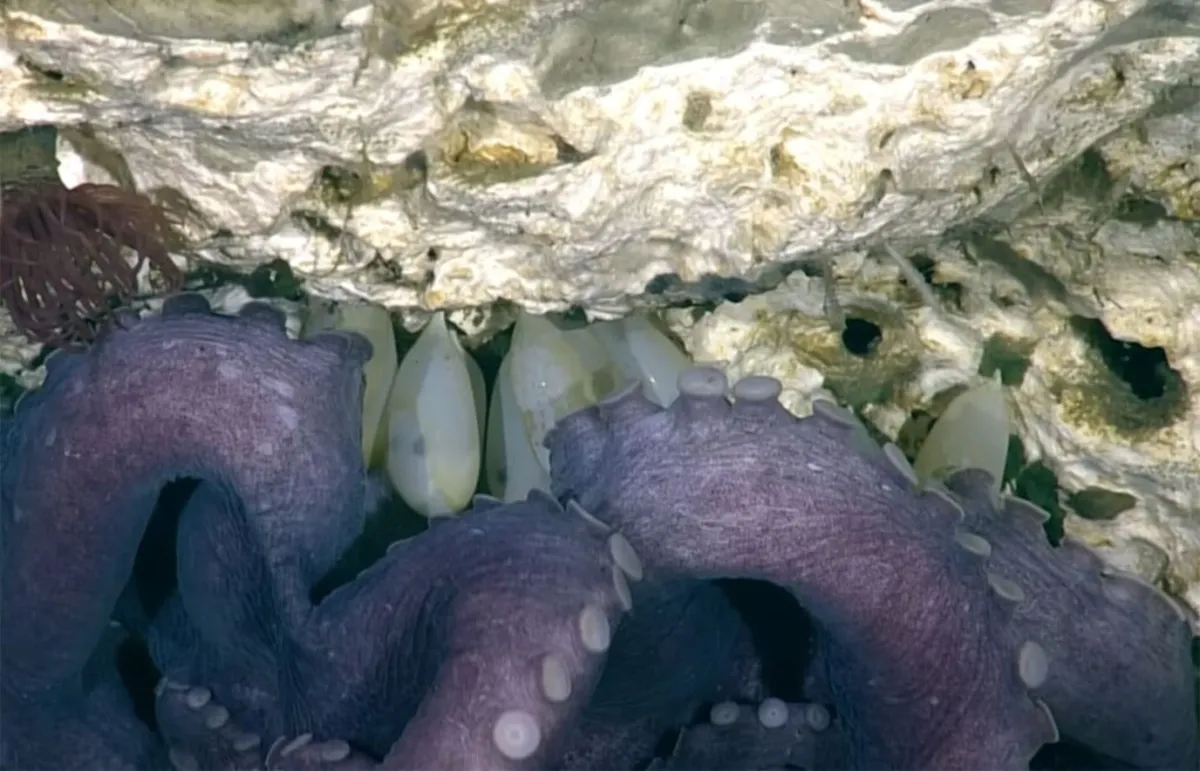
An unusual discovery has captivated marine specialists: thousands of giant eggs, commonly referred to as “mermaid pouches”, have been found in a still-active underwater volcano off the coast of Vancouver Island, Canada. These extraordinary eggs belong to the Pacific white skate, a species that remains largely enigmatic. This revelation highlights how certain sub-glacial ecosystems can foster the birth and growth of marine species, unveiling some of the hidden mysteries of our deep blue sea.
The underwater volcano near Vancouver Island, previously believed to be dormant, has regained attention following a 2019 expedition led by marine biologist Cherisse Du Preez. This seamount, which rises 1,100 meters from the ocean floor, is situated at a depth of approximately 1.5 to 1.6 kilometers below the surface. Explorers have discovered that the volcano emits warm, mineral-rich water, creating an environment that supports unexpected marine biodiversity. The geothermal activity from the volcano is crucial for the development of the giant eggs found in this unique setting.
These remarkable eggs, measuring between 0.46 meters and 0.5 meters wide, have a notably long gestation period of four years. The warmth generated by the volcano acts as a natural incubator, speeding up this gestation process and giving young Pacific white skates a significant advantage as they develop.
The Pacific white skate (Bathyraja spinosissima) predominantly inhabits the frigid waters of the Pacific Ocean, evolving at depths ranging from 792 meters to 2,896 meters. Female Pacific white skates lay large eggs, expending considerable energy to supply their offspring with the essential nutrients required for development, a phenomenon that exemplifies marine gigantism. Adult skates can grow up to 2 meters in length, showcasing their remarkable adaptability to the harsh conditions of the deep sea.
The warmth emanating from the shallower summit of the volcano provides an ideal habitat, which Cherisse Du Preez describes as “almost a coral garden and a safe nursery for juveniles before they descend into the great depths.” This vivid description underscores the significant role that volcanic environments play in the early life stages of stingrays.
In 2018, a similar occurrence was documented in the Galapagos Islands, where eggs measuring just over 10 cm were found near hydrothermal springs. These observations suggest that volcanic heat is utilized by various species for egg incubation. In 2023, a new expedition allowed researchers to witness a white stingray laying an egg live at the Canadian site. Furthermore, scientists uncovered evidence indicating that multiple species use this distinctive location as a natural nursery.
This remarkable find not only contributes to our understanding of the Pacific white skate but also emphasizes the importance of volcanic ecosystems in sustaining marine life. As research continues, the mysteries of these underwater habitats may reveal even more about the resilient species that thrive in our oceans.